Table of insect species
| French name
|
English name
|
Latin name
|
Pictures
|
About the species
|
| Œdémère noble
|
False oil beetle |
Oedemera nobilis |
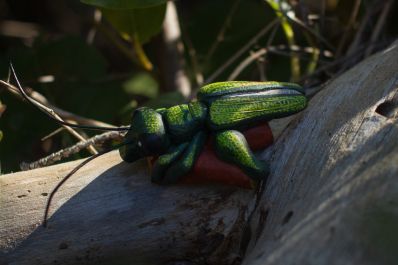 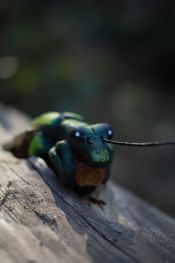
|
The males of this green critter have such massive hind femoras that people call it a “maillot vert” (the green jersey is worn by the best sprinter during Tour de France). They are an important pollinator species all across Western Europe.
|
| Clyte trifascié
|
Mediterranean Longhorn beetle |
Chlorophorus trifasciatus |
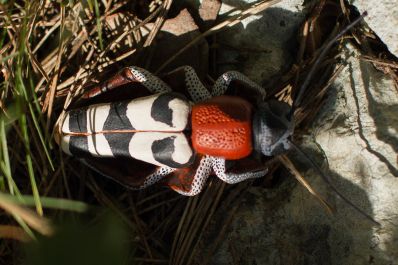 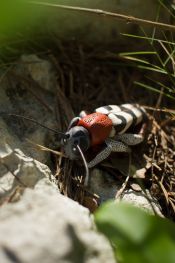
|
Longhorn beetles are essential pollinators: adults (imagos) often feed on plants’ nectar; while larvaes feed on wood (xylophagous).
|
| Empuse commune
|
Conehead mantis |
Empusa pennata |
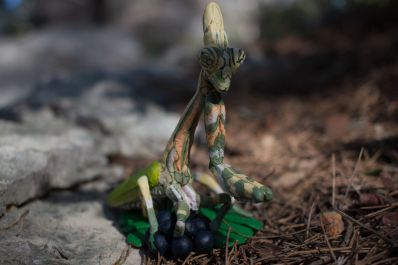 ] ]
|
Contrary to praying mantis, females do not devour the male while reproducing.
|
| Gendarme
|
Firebug |
Pyrrhocoris apterus |
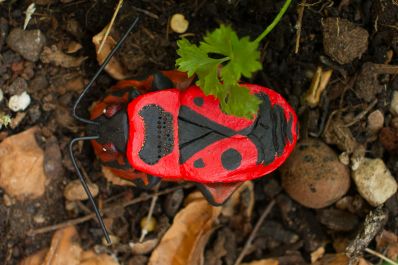 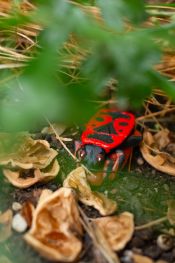
|
These bugs are subordinate to lime trees and mallows. Their french name refers to the “gendarme”, a feared paramilitary force which XIXth century uniforms used to display the same colors as those bugs.
|
| Bupreste à neuf tâches
|
Jewel beetle with nine spots |
Buprestis novemmaculata |
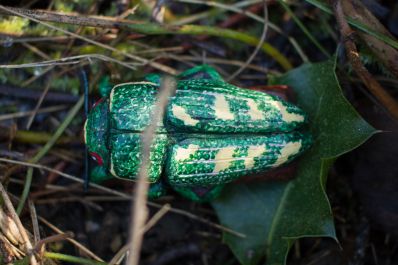 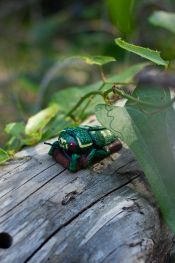
|
Adults feed on pollen while larvaes dig tunnels into pines’ wood.
|
| Perce-oreille commun
|
European earwing |
Forticula auricularia |
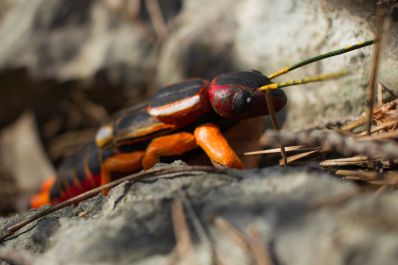 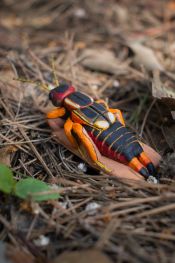
|
There are many theories about their name origins: some say that it comes from the appearance of the hindwings, which are unique in their resemblance to human ears, other argue that they really used to be wore as earrings, but their forceps (cerci) are generally only used for courtship.
|
| Chrysomèle fastueuse
|
Dead-nettle leaf beetle |
Chrysolina fastuosa |
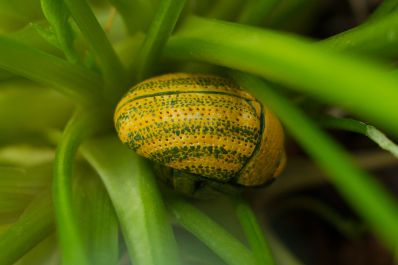 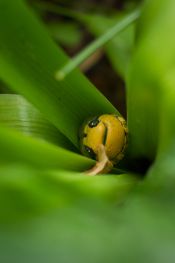
|
This beautiful little bug is typically playing dead when found on a nettle or other Lamiaceae plants.
|
| Criquet bariolé
|
Large banded grasshopper |
Arcyptera fusca |
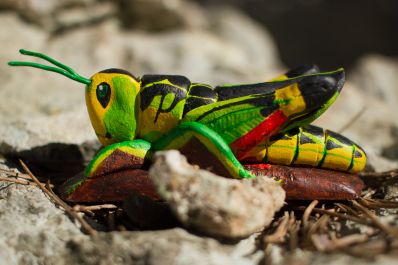 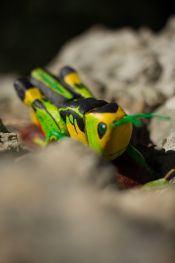
|
Typical from dry meadows and high mountains, those grasshoppers have become scarce in Eastern Europe.
|
| Frelon d'Europe
|
European hornet |
Vespa crabro |
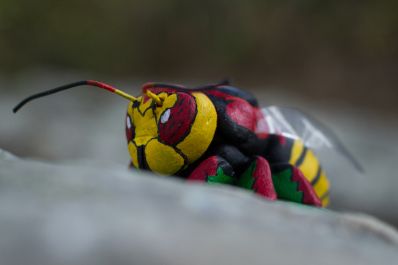 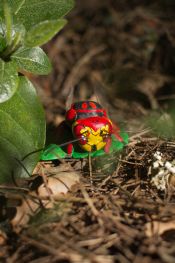
|
These are useful predator for the European ecosystems, and they are not worse/better than asian hornet, which has been in Europe for so long that it is part of it too.
Only females possess a stinger, it is a modified egg laying device: males cannot sting. Colonies live in paper nests located in dark places, that are made by female workers’ cement: they chew bark and trees mixed with their saliva to build their home (like most social wasps).
|
| Grande perle (nymphe)
|
Stonefly (nymph) |
Perla bipunctata (naiad) |
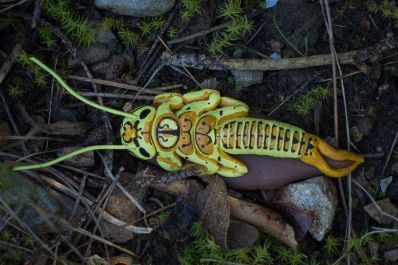 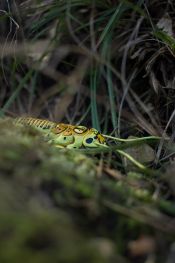
|
This is a nymph (juvenile form) stonefly, which are believed to be one of the most primitive groups of winged insects. Finding these nymphs, called “naiads”, in water streams is an indicator of excellent water quality.
|
| Pimélie
|
Darkling beetle |
Pimelia bipunctata |
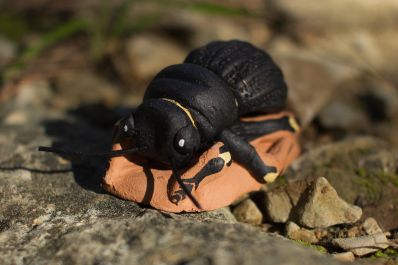 ] ]
|
Most darkling beetles (tenebrionids) are cute plant scavengers. Pimelia bipunctata are capable of secreting a smelly red liquid when they feel threaten.
|
| Barbitiste languedocien (mâle)
|
Languedocian bush cricket (male) |
Barbitistes fischeri |
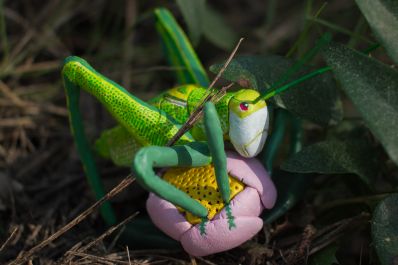 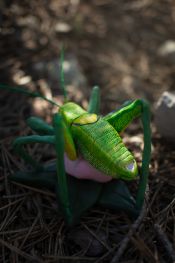
|
|
| Hanneton commun
|
Common cockchafer |
Melolontha melolontha |
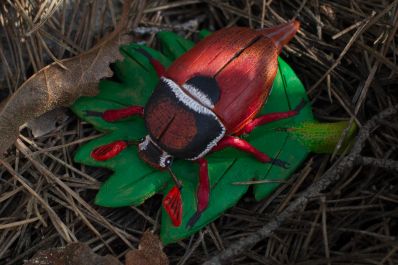 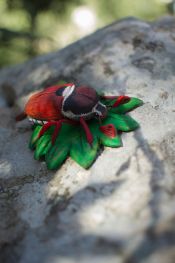
|
As they multiply, cockchafers can become a farmers’ nightmare, eating plants’ roots unnoticed. Their life cycle is 3 years long, spent mostly buried in the soil.
|
About
Ongoing project written at first person as Robin Bantigny.
Sculptures of various mediterranean insect species, inspired by the Santons from Provence.
Modeling technique
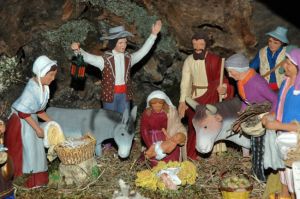
Typical nativity scene depicted with santons from Provence.
Santons from Provence are small, colorful clay figurines that represent the Nativity scene in Christmas cribs (the baby Jesus, the Virgin Mary, and Saint Joseph, with the donkey and ox supposed to warm the child with their breath), the Three Wise Men and the shepherds, as well as a whole series of small figures representing the inhabitants of a Provençal village and their traditional trades.
The technique used to make these insect figurines is close to the same as that used for Provençal Santons[1], as there are no molds and no firing: they are unique pieces that are sculpted and painted by hand.
In the purpose of a small-scale mass production to use those figurines as a pedagogical tool for entomology initiation, I am now experimenting on molding: plaster molds are not flexible enough for the level of details of arthropods’ anatomy, thus I am working on latex molds to make plaster copies that would be light, robust and convenient to paint by hand.
Notes
- ↑ Santon makers go through seven stages to make a santon. First, they make a model out of raw clay placed on a base that will form part of the figure. Next, they make a plaster mold. The molding is done by pressing a coil of fresh clay into one half of the mold, which has been dusted with talcum powder. After pressing both sides by hand, the excess is trimmed away and the santon is removed from the mold and left to dry. The final manual operation consists of more precise trimming to remove all traces of the mold. The santon is then left to dry again before being fired in a kiln at 800°C. The final step is decoration, which is always done by hand.
























